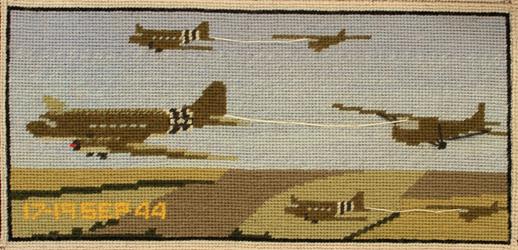Waco CG-4 (R.A.F. Hadrian) Glider

In September 1944, 442 Troop Carrier Group of the U.S. Army Air Force arrived in Chilbolton with four squadrons of C-47 Dakotas. On the 19th September,
forty C-47 Dakotas towing Waco CG-4 gliders, loaded with troops and equipment, took off from Chilbolton for, “Operation Market Garden,” the Allied Invasion of Holland. An R.A.F. Hadrian (U.S. Waco CG-4) transport glider was the first glider to be towed across the North Atlantic. Towed by an R.A.F. Dakota, it was flown in stages from Montreal to the U.K. in 28 hours, proving that a glider could be towed long distances and successfully negotiate taking off and landing. Large-scale glider operations took place in World War II as a method of transporting huge numbers of troops and their equipment by air, towed to destinations in mainland Europe by powerful aircraft. One of the biggest operations was in June 1944 – the D-Day Normandy landings, when hundreds of Allied gliders were deployed. In September 1944, gliders and tow-planes were used in “Operation Market Garden,” an attempt to capture five bridges on the road to Arnhem. Forty-five C-47 Dakotas towing gliders took off from Chilbolton for this invasion of Holland – only twenty-eight were delivered safely. The 17th Airborne Division of the American Army, made up of paratroopers and glidertroopers, was stationed in Chilbolton from 1944 to 1945. In March 1945, the 17th Airborne Division took part in “Operation Varsity,”- the first airborne assault into Germany and the last combat glider assault of the war.





No Comments
Add a comment about this page